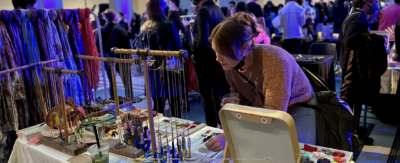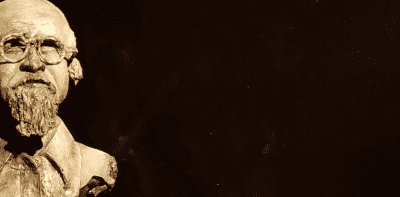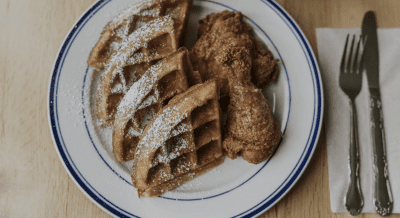Courtesy Alexander Si
A Brooklyn-based artist’s latest installation: A fake real estate office
"170 Forsyth" by Greenpoint artist Alexander Si is a head-fake of a show that challenges notions of housing and gentrification
Lower East Side residents and visiting art enthusiasts may have been surprised to find Ki Smith Gallery transformed into the leasing office for 170 Forsyth, a fake, albeit very convincing, luxury apartment building. It is, in fact, art.
“170 Forsyth” is an installation by conceptual artist and Greenpoint transplant Alexander Si. One of the hallmarks of Si’s work are these types of immersive trompe-l’œil environments that aim to get visitors thinking critically about the consumerist elements of society. As a conceptual artist, he’s more committed to confusing and challenging his audience than he is to any specific medium — Si experiments across film and painting too. Last summer, he invoked ire and a media frenzy after remodeling downtown gallery Chinatown Soup into a decoy Sweetgreen.
“I’m always kind of extra,” Si tells Brooklyn Magazine, describing his “way of pushing forward a concept, or pushing forward a way of seeing.”
Si arrived in New York City from Toronto four years ago to follow his double bachelor’s in architecture and media studies with a master’s from the School of Visual Arts. He’s lived in Chinatown since graduating in 2021, thanks to a landlord who cut him a deal. After finishing his stint as the artist-in-residence at Chinatown Soup last summer, Si moved his studio to Greenpoint — braving the commute from Chinatown for the sake of a space large enough to host his whole industrial outfit of welding, soldering and woodworking machinery.
There, Si has been tapping into his architecture training. As with Sweetgreen, the artist made everything at “170 Forsyth” bespoke — from lobby furniture modeled off Goop’s reception area “with a whiff of coastal grandma” to professional-grade renderings of the fake luxury apartment building he’s envisioned. Si even built a model of “170 Forsyth” surrounded by cast concrete that’s more practical and realistic than anything he made while actually studying architecture.
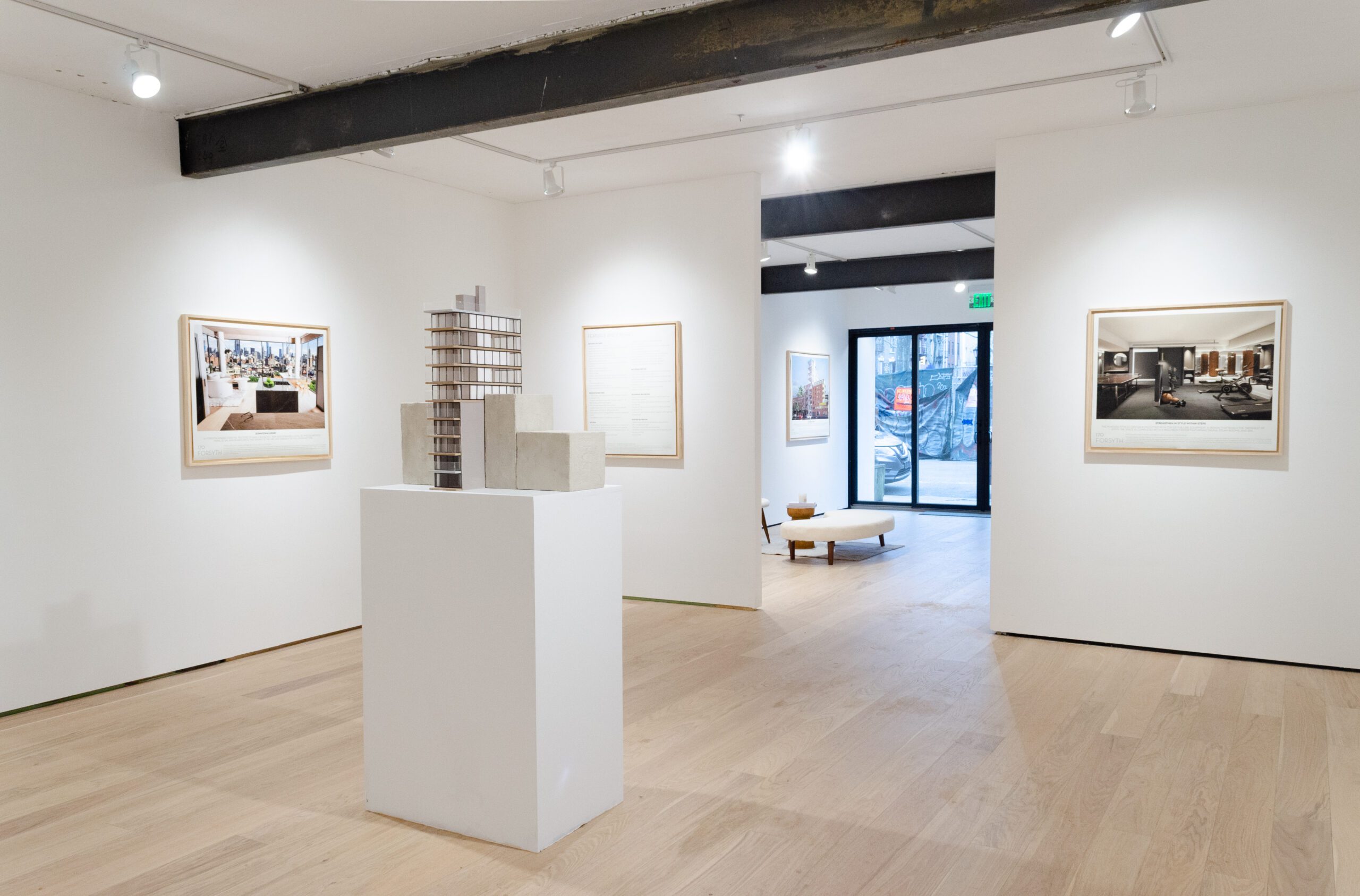
Courtesy Alexander Si
“The only way to challenge how people feel about something is to disrupt their preconceived notion,” says Si. In order to surprise viewers, they have to believe the facade first.
Si pours substantial research into each of his projects: “170 Forsyth” started well before Si had the gallery on deck, as he studied the stick skyscrapers dotting Central Park South. “The irony is a lot of rich people bought these things, considered stable assets, and they’re not really living there,” Si says of Millionaire’s Row, where occupancy rates hover around 20 percent as New York City faces its highest rates of homelessness since the Great Depression.
Ki Smith Gallery offered Si the opportunity for this show six months ago. He had just moved to Greenpoint, where glass skyscrapers stand in contrast to the Polish enclave’s more squat, traditional buildings. Ki Smith was on the move too, from the East Village to a former fish market other galleries had passed over in the Lower East Side, across the street from three new luxury developments.
Si pivoted his real estate research to focus on the two block radius surrounding the forthcoming show. He solicited developer marketing materials and realtors’ brochures and arranged data on their construction and amenities into an Excel sheet. The exhibition’s opening on January 21 even offered catering from Happy Boards to more closely ape an open house.
“I found this exhibition particularly interesting since I was born and raised across the street and have really seen this neighborhood change,” Smith says. “We’ve gotten a range of confused folks, from couples interested in potentially moving to the new development, to longtime neighbors wondering if they will be evicted, to landlords excited by the proposed prosperity.”
Although the project has proven just as deceptive as Si’s Sweetgreen show last summer, his real estate angle hasn’t sparked quite the same backlash. Not that people have more feelings about Sweetgreen than generic gentrification. Maybe it’s just an easier target.
As for whether all of this really constitutes “art,” Si points skeptics to Claes Oldenburg’s 1961 installation “The Store,” also once on view in the LES — not to mention art history’s long running love affair with readymades.
In this case, Si took a few liberties to imbue his installation with nuance. Next door to Ki Smith Gallery is a Chinese community center. In his renderings, Si has blurred the Chinese characters from its banner, adding fake boutiques instead to evoke an insidious sprawl.
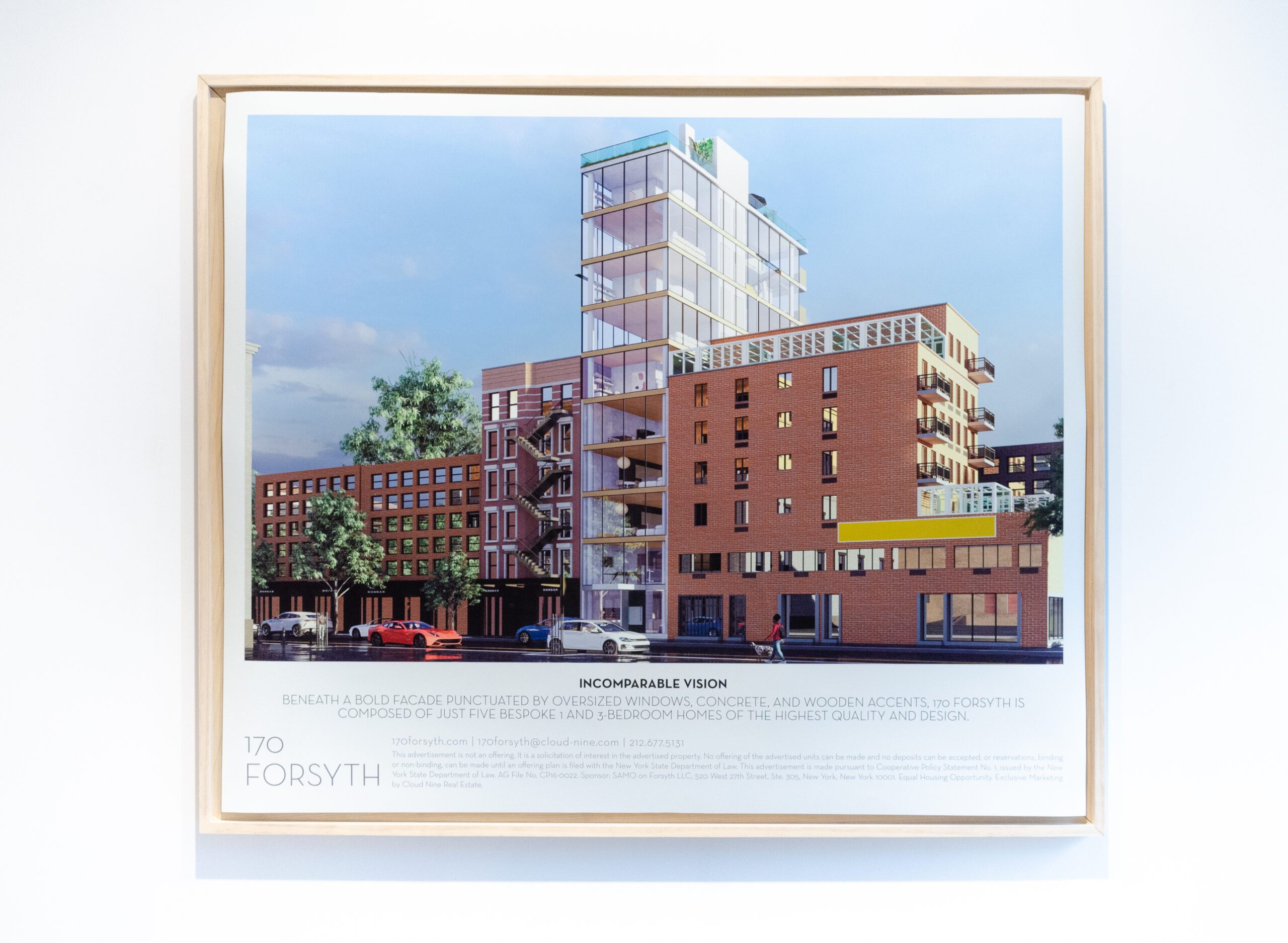

Courtesy Alexander Si
Of course, housing on its own isn’t bad, Si says. It’s a particular type of profit-driven, community-agnostic developer’s approach he’s criticizing. “They feel like they can do whatever they want, because they have money,” Si says. “There’s such a sense of irreverence, and not in the good way.” Marketing materials he saw for new buildings on the Lower East Side, for instance, touted the presence of Supreme and Jack’s Wife Freda in the neighborhood.
“Bougie stuff,” Si says. “But there’s stuff in the neighborhood that is completely glossed over. It’s not up to that lifestyle, that standard. No one talks about it, or they try to hide that.”
Si is currently making use of his new Greenpoint space. On February 3, his 2020 looping video “Unbox” will debut at Hong Kong’s Square Street Gallery, complete with a performance he scripted for art handlers. On February 24 he’ll start a residency at nonprofit Cleveland Spaces that will culminate in a performance related to Amazon warehouses.
“170 Forsyth” will remain on view, fooling viewers and igniting conversations through February 26.
You might also like 

















